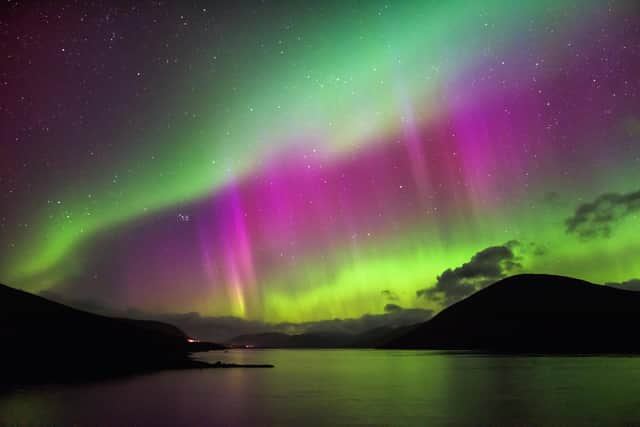Northern Lights set to dazzle Scotland again - where can I see the Aurora Borealis in Scotland?
Last month, Britons were treated to a spectacular show when the Aurora Borealis was visible from Shetland to the Central Belt and the Scottish Borders.
More recently, a solar flare from the Sun collided with the Earth's atmosphere, creating a colourful spectacle seen across the country.
Advertisement
Hide AdAdvertisement
Hide AdThe Met Office has said the Northern Lights will be visible again on Thursday night and Friday night this week, clear skies permitting.


This display is a result of a "hole" that has appeared on the surface of the Sun, generating solar storms with winds heading towards Earth.
Krista Hammond, of the Met Office Space Weather Operations Centre, said: "Minor solar storms are possible on Thursday and Friday night, which means aurora sightings would be possible in northern Scotland under clear skies.
"As this is a fairly minor solar storm, the auroras aren't expected to be visible much further south on this occasion."
The hole in the Sun is known as a coronal hole – a large dark region in the solar atmosphere which is cooler than the surrounding area.
About 20 times bigger than Earth, it was spotted by Nasa's Solar Dynamics Observatory.
Daniel Verscharen, associate professor in space plasma physics at University College London, said: "Coronal holes are regions from where fast solar wind is launched into space.
"Fast solar wind has speeds of about 700km or 800km per second and is thus almost twice as fast as the average solar wind.
Advertisement
Hide AdAdvertisement
Hide Ad"This particular coronal hole is of interest to us because it has pointed towards Earth – this means that it has released fast solar wind towards the Earth."
While solar storms have the capability to wreak havoc on satellites and power infrastructure, forecasters are not expecting any major damage to occur as it is a minor one.
Ms Hammond said: "This is expected to be a G1 solar storm, which is the lowest category for these events and the most frequent events we see."
Christopher Owen, professor of physics and head of Space Plasma Group at UCL, said a UK-built spacecraft – the Solar Orbiter – detected the fast solar wind using its onboard wind detector.
He said: "In the measurements, we see an increase in the solar wind speed from about 400km per second yesterday around midnight to over 700km per second this morning.
"This faster solar wind will reach the Earth in the early evening of tomorrow."
Increased solar activity in the past few weeks is a sign that the Sun is becoming more active, scientists say.
Known as solar maximums, these periods come around every 11 years or so, which can lead to more coronal holes as well as more significant phenomena such as large expulsions of plasma and magnetic field known as coronal mass ejections.
Comments
Want to join the conversation? Please or to comment on this article.